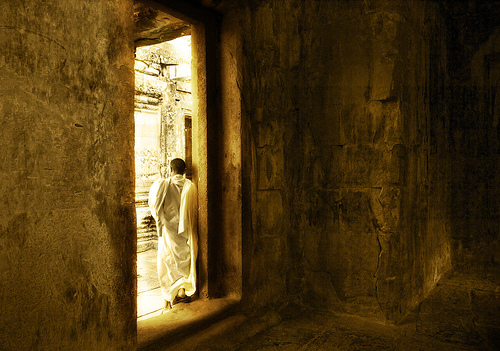
Architecture photography is not only about capturing the strength and authority of huge structures, it is also about portraying the beauty and craftsmanship of the beautiful architectures. It is like documenting the hard work, effort and uniqueness of buildings all around us. You don’t need to go out hunting for beautiful buildings, instead you just need an observing eye to make the most from the architectures and structures surrounding you. While the ancient architectures are stunningly beautiful, new age modern buildings are highly creative and unique. Here are 10 tips on how to photograph architectures, each supported by an example to further help you relate how these tips work in reality.
-
Capture Fine Details
The essence of the monuments and the modern architectures lies in the finish with which the sculptures and designs are engraved on them. These fine details when portrayed on the two dimensional frame provides an insight into beautifully crafted curves, domes, tombs, pillars…
-
Add Liveliness By Including People
Photographing the buildings and structures as the subject is a good idea, but at times these strong and erect structures may look dull and boring. Consider including people; perhaps a girl posing against the wall or a child playing in the foreground or some birds sitting on the top notch of the building help in adding liveliness to the scene.
-
Photograph The Textures
Including some fine details like textures when photographing the architectures and buildings enables the viewer to relate to the reality. By looking at the textures in the photographs, human conscious makes us feel the roughness, smoothness, sleekness, finishing, etc through the photographic frame itself. Also, these photographs sell well for web-design and similar purposes on stock photography sites.
-
Photograph The Architecture / Exteriors During The Golden Hour
Magic light or the golden hour is perhaps the most sought out time for shooting outdoors. The natural light casts the magic spell on whatever the subject be. In case of monuments, these ancient structures look nothing less than brilliant. Wait for the sun to set and then start taking shooting every one (or five) minute for the next 10-15 minutes when the sun is set and the magic light follows. But this works by the nature of laws. It is quite possible that some fine day when you are shooting outdoors, you may not see such magic cast spell over the subject or perhaps the clouds come on a surprise visit.
-
Use Artificial Lights To Your Advantage
While photographing the architectures in day light enables you to capture fine details, textures, patterns and beautiful engravings, going out for a photo-shoot at night enables you to capture the glory of the buildings. The artificial lights at night prove to be a good source for partial illumination, which enables you to photograph reflections off the window panes, highlights & shadows and helps in getting great colors when photographed against the sky filled in various shades of red; owing to the setting sun.
-
Look For Lines And Patterns
Architectures, buildings, monuments, structures, bridges… just name it and you will see the integral beauty and strength of all the buildings and structures lies in the symmetrical lines running from one edge to the other. These horizontal and vertical lines depict the patterns and when photographed from right angle, they just make an outstanding composition.
-
Use Perspective Correction Lens
One of the problems encountered with architecture photography is the geometrical distortions. Normal lenses tend to produce the effect of pillars merging at the top notch of the building. You can effectively control the geometrical distortions by using perspective correction lens. The perspective control lenses (PC lens) are specifically designed for architectural photography. The PC lens allows the photographer to control the appearance of perspective in the image; the lens can be moved parallel to the film or sensor, providing the equivalent of corresponding view camera movements. This movement of the lens allows adjusting the position of the subject in the image area without moving the camera back; it is often used to avoid convergence of parallel lines, such as when photographing a tall building. And if you photograph architecture full time, by all means invest into a good quality perspective correction lens like Nikon 28 4.0 Pc Shift Lens.
-
Pick Out Interesting Details
Most of the people have already photographed the famous monuments and buildings. It is not necessary to photograph the buildings and structures in entirety. Every other photographer tries to portray the strength, beauty and uniqueness of the structures, you can simply make the difference by capturing something unusual.
-
Try Out Natural Frames
Natural framing is a sure shot composition technique for drawing the viewer’s attention to your center of interest. Applying the same rule to the architectures works well. Try to find natural frames around the architectural buildings and compose the scene in perspective to the natural bodies surrounding the structure or use the structures as frame to the subject.
-
Add Your Perspective
Why would someone like your photographs over the others? It is probably because of the story or the viewpoint illustrated by you which no one else has been able to portray. The thing which makes the difference to your photographs is your viewpoint. Especially in case of architectures, when most of the photographers have already captured the monuments and buildings, one thing that sets apart the work of one photographer from the other is the perspective (the place where you stand and the angle of shooting).

Do you have some more architecture photography tips to add to the list? Share them in comments.









